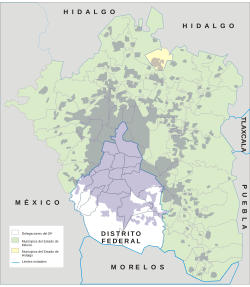 Mexico City is facing an egregious civil engineering problem. The culprit: a depleting groundwater aquifer. People around the world have been hearing about these so called sinking cities; Venice, Mexico City and Los Angeles to a lesser extent. From a geophysical standpoint, these sinking cities are sinking because its residents pump copious amounts of water from its underground aquifer. This is done primarily through wells and happens usually because of a phenomenon called “absolute dominion” which is when residents can essentially pump as much water as they like because the state allows them to.
Mexico City is facing an egregious civil engineering problem. The culprit: a depleting groundwater aquifer. People around the world have been hearing about these so called sinking cities; Venice, Mexico City and Los Angeles to a lesser extent. From a geophysical standpoint, these sinking cities are sinking because its residents pump copious amounts of water from its underground aquifer. This is done primarily through wells and happens usually because of a phenomenon called “absolute dominion” which is when residents can essentially pump as much water as they like because the state allows them to.When you over pump an aquifer or in Mexico City’s case, have 8 million plus people drawing heavily from it… its hydro capacity becomes jeopardized. It is estimated that Mexico City has sunk as much as 30 feet over the course of the 20th century.
When the city was planned by engineers and architects, they did not forecast or predict such rapid population growth. A fast growing population ultimately exhausted its natural springs causing the subsoil of the land to degrade very quickly. Indeed, this land subsidence has consequently led to serious financial problems for the city causing hundreds of millions of dollars in damage to buildings and structures.
Sewer lines and subway tunnels have required serious revitalization after being damaged by a collapsing aquifer. Civil and Structural engineers have begun putting up scaffolding and more compact structural materials to protect important buildings like the National Cathedral.
This particular conundrum is by no means an easy one to solve. 70 percent of the water used in the metropolitan area comes from the main aquifer. People are thirsty and are living in a climate that has an average yearly temperature of 30 degrees Celsius. It is hot and the ubiquity of pollution and smog are only exacerbating matters.
In the early 2000s, the New York Times summed up Mexico City’s water issue very well: “The water difficulties have become a vicious circle: as the city grows, more water is pumped from the aquifer. As more is pumped, the city sinks further. The sinkage ruptures more underground water pipes, sending fresh water gushing into the sewers, aggravating the shortage, requiring more water to be pumped from the aquifer, and so on.”
Having an inadequate water distribution system is incredibly troublesome. About a third of every gallon of fresh water pumped into the system leaks out- over a year that is enough water to supply the city of Toronto!
From an optimistic lens, change is coming to the forefront. The city is building vast pipelines to bring water from rivers outside of the metropolis- this is good water demand management albeit expensive. And rain water harvesting is becoming more salient. So when it rains… people are trying to collect that water, self-purify it and then treat it, and then drink it. The city should also explore an infrastructure leak index to locate, quantify and repair the leakage within its water distribution system.
There are a plethora of issues surrounding Mexico City. But as this blog has identified in the past, there are numerous solutions for managing water including education about water efficient technologies to more equitable water allocation decisions to conservation.
Key message: Mexico City must start looking and learning from California’s water solutions, a state that has a massive population and a dwindling water supply. For more information on this topic see here:
No comments:
Post a Comment